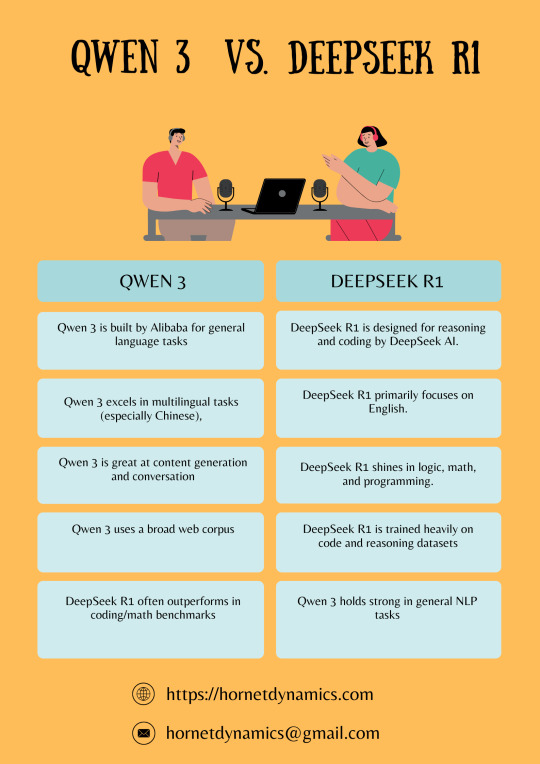#opensourceai
Explore tagged Tumblr posts
Text
Step into the future with Llama 3.1, the latest iteration in open-source large language models by Meta AI. With its high parameter count (405B) and multilingual capabilities, it’s redefining what’s possible in the world of AI.
#Llama3.1#OpenSourceAI#LargeLanguageModel#ArtificialIntelligence#DeepLearning#MachineLearning#NLP#artificial intelligence#open source#machine learning#programming#software engineering#opensource#python
2 notes
·
View notes
Text

Your AI Doesn’t Sleep. Neither Should Your Monitoring.
We’re living in a world run by models from real-time fraud detection to autonomous systems navigating chaos. But what happens after deployment?
What happens when your model starts drifting, glitching, or breaking… quietly?
That’s the question we asked ourselves while building the AI Inference Monitor, a core module of the Aurora Framework by Auto Bot Solutions.
This isn’t just a dashboard. It’s a watchtower.
It sees every input and output. It knows when your model lags. It learns what “normal” looks like and it flags what doesn’t.
Why it matters: You can’t afford to find out two weeks too late that your model’s been hallucinating, misclassifying, or silently underperforming.
That’s why we gave the AI Inference Monitor:
Lightweight Python-based integration
Anomaly scoring and model drift detection
System resource tracking (RAM, CPU, GPU)
Custom alert thresholds
Reproducible logging for full audits
No more guessing. No more “hope it holds.” Just visibility. Control. Insight.
Built for developers, researchers, and engineers who know the job isn’t over when the model trains it’s just beginning.
Explore it here: Aurora On GitHub : AI Inference Monitor https://github.com/AutoBotSolutions/Aurora/blob/Aurora/ai_inference_monitor.py
Aurora Wiki https://autobotsolutions.com/aurora/wiki/doku.php?id=ai_inference_monitor
Get clarity. Get Aurora. Because intelligent systems deserve intelligent oversight.
Sub On YouTube: https://www.youtube.com/@autobotsolutions/videos
#OpenSourceAI#PythonAI#AIEngineering#InferenceOptimization#ModelDriftDetection#AIInProduction#DeepLearningTools#AIWorkflow#ModelAudit#AITracking#ScalableAI#HighStakesAI#AICompliance#AIModelMetrics#AIControlCenter#AIStability#AITrust#EdgeAI#AIVisualDashboard#InferenceLatency#AIThroughput#DataDrift#RealtimeMonitoring#PredictiveSystems#AIResilience#NextGenAI#TransparentAI#AIAccountability#AutonomousAI#AIForDevelopers
0 notes
Text
CLIMATE JUSTICE NOW: How to End Fossil Fuel Finance While Protecting Indigenous Rights in the Global Cost of Living Crisis CLIMATE JUSTICE ADVOCACY Explore the forefront of climate justice efforts, featuring influential voices advocating for environmental and indigenous rights.
#ClimateEmergency#ClimateCrisis#ClimateChange#Sustainability#EnvironmentalRights#HumanRights#Activism#OpenSourceAI#Perplexity#Llewelyn Pritchard#climatejustice#corruption#rightsofnature#civilresistance#ai#education
0 notes
Text
0 notes
Text
Qwen 3 vs DeepSeek R1: Battle of the Next-Gen AI Models

Discover the key differences between Qwen 3 and DeepSeek R1—two of the most advanced AI models in 2025. From performance benchmarks to coding capabilities, we break down which model leads in innovation, reasoning, and real-world applications. Find out which AI is right for your needs!
#Qwen3#DeepSeekR1#AIModels2025#ArtificialIntelligence#MachineLearning#AIBenchmark#GenerativeAI#TechComparison#AIInnovation#FutureOfAI#OpenSourceAI#AIResearch#NextGenAI#AIDevelopers#LLMComparison
0 notes
Text

Why stick to one AI tool when today’s innovations demand synergy?
Modern AI development doesn’t rely on a single model or library it thrives on integrated ecosystems.
Here are 8 powerful tools every aspiring AI Engineer should know:
GPT-4 (OpenAI) – Powerful LLM for reasoning, generation, and comprehension
LangChain – Framework to connect LLMs with external data and APIs
DeepSpeed (by Microsoft) – Speeds up training of large models efficiently
AutoGen (Microsoft) – Enables multi-agent conversations and collaborative AI workflows
Hugging Face Transformers – Open-source hub for state-of-the-art NLP models
Runway ML – AI for media creators: image, video, and animation generation
LLM Guard – Secure and sanitize LLM outputs to prevent risks (e.g., prompt injection, PII leaks)
Gradio – Instantly demo AI models with shareable web interfaces
These tools work best together, not in silos.
At School of Core AI we don’t teach tools in isolation. We teach you how to orchestrate them together to build scalable, real-world GenAI apps.
#GenerativeAI#GPT4#LangChain#DeepSpeed#AutoGen#HuggingFace#RunwayML#Gradio#AItools#MachineLearning#OpenSourceAI#AIFrameworks#MultiAgentAI#LLMengineer#AgenticAI#AIEducation#SchoolOfCoreAI#LearnAI
1 note
·
View note
Text
0 notes
Text
𝐃𝐞𝐞𝐩𝐒𝐞𝐞𝐤 𝐀𝐈: 𝐓𝐡𝐞 𝐍𝐞𝐰 𝐁𝐞𝐚𝐬𝐭 𝐢𝐧 𝐓𝐨𝐰𝐧?
DeepSeek AI is gaining massive attention as an open-source GPT-4-level model from China. But is it actually good? In this short, we break down its biggest strengths, surprising flaws, and what it means for the future of AI.
Watch https://youtu.be/nfFBEH8l78U
Subscribe for more unfiltered AI breakdowns.
0 notes
Text

Meta just dropped Llama 4 — and it's a game-changer in AI. From chat to search to content creation, Llama 4 models are smarter, faster, and built to understand more than ever — including text, images, and video.
💡 Highlights: • Two powerful models: Scout & Maverick • Multimodal AI (text + images + video) • Huge context window (up to 10M tokens) • Efficient design with MoE architecture • Now in Meta AI + available for developers
Meta isn’t just building for the future — it’s sharing it
#NextGenAI#Llama4#MetaAI#AIFuture#OpenInnovation#ArtificialIntelligence#MachineLearning#AIModels#TechInnovation#OpenSourceAI#MetaPlatforms
0 notes
Text
The AI race : US vs China
Lately, I’ve been feeling both fascinated and uneasy about the developments in artificial intelligence, particularly regarding China’s advancements. It's hard not to notice how quickly China has caught up, and even surpassed, the US in creating powerful large language models (LLMs). These models are not only of high quality, but they’re also cheaper and smaller in size, often open source. How did they manage to do this so fast?
I can't help but wonder—how did China make such strides in such a short amount of time? Are they simply more innovative and resourceful, or is there something else going on? The speed of development is mind-blowing, and it makes me wonder if they're somehow getting access to data from the US and the companies behind the big LLM models. Is this a case of intellectual property theft, or even worse, are they stealing data in ways that we aren’t aware of?
There's a growing sense of anxiety surrounding China’s AI boom. It feels like the technology is advancing so rapidly that it's almost impossible to keep up, and there's a looming feeling of surveillance and espionage. I find myself questioning if they’re spying on us, tapping into our data or creating models that have hidden agendas. Is this just speculation on my part, or are these legitimate concerns?
I’m not sure, but the speed at which they’ve been able to develop these LLMs is certainly unsettling. It feels like a race where we’re being outpaced, and it’s hard not to feel a sense of uncertainty about what’s coming next.
#AI#ArtificialIntelligence#China#US#Technology#LLMs#AIFuture#DataPrivacy#AIConcerns#AIAdvancement#TechEthics#AIandSurveillance#OpenSourceAI#AIInnovation#DigitalEspionage#TechDebate#FutureOfAI#ChinaAI#USvsChina#TechNews
0 notes
Text
Learn about Llama 4, a cutting-edge open-source AI model that's redefining multimodal intelligence. Discover how its early fusion for native multimodality enables seamless understanding of text and images. With an astounding 10 million token context window and support for 200 languages with robust support, Llama 4 is a powerful tool for various applications. See how its mixture-of-experts (MoE) architecture contributes to its efficiency and performance.
#Llama4#AI#Meta#MultimodalAI#OpenSourceAI#NLP#open source#artificial intelligence#machinelearning#software engineering#programming#opensource#python
0 notes
Text

#OpenSourceAI#AIResearch#MachineLearning#AICommunity#AIInnovation#OpenSourceSoftware#AIAdvancements#TechForGood#AIinEducation#AIethics
0 notes
Text
#UAEAI#FalconArabic#FalconH1#ArabicAI#MultilingualAI#OpenSourceAI#TII#ATRC#AIInnovation#TechLeadership
0 notes
Text

Alibaba’s QwQ-32B is a cutting-edge open-source AI model redefining the future of artificial intelligence! With powerful capabilities, it rivals top AI models, offering innovation, efficiency, and accessibility. Stay ahead in AI evolution!
0 notes
Link
DeepSeek, a relatively unknown Chinese AI startup, has emerged as a formidable competitor to U.S. tech giants like OpenAI, Meta, and Google.
1 note
·
View note
Link
#ai#AIDevelopments#AIInnovations#aimodels#ainews#ainewsthisweek#AITools#aiuncovered#aivideo#aiupdates#artificialintelligence#ByteDanceX-Portrait2#ByteDance'sX-Portrait2#DeepLearning#MachineLearning#newaitools#NvidiaNemotron#openai#opensourceai#Replit#ReplitUpdates#RunwayML#TechNews#technologyupdates#TopAINewsThisWeek#WeeklyAINews
0 notes